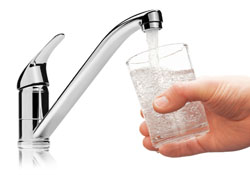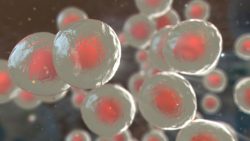
America has a drinking water crisis. An NRDC study has found that contaminants that may harm human health are found in tap water in every state in the nation. This is a problem even for people who don’t drink tap water since water borne toxins can be absorbed through the skin and lungs while bathing and into food if used for cooking.
Established in 1974, the Safe Drinking Water Act is one of the bedrock environmental laws in the United States, consisting of rules that regulate about 100 contaminants found in drinking water. NRDC has documented serious problems with our outdated and deteriorating water infrastructure, widespread violations and inadequate enforcement of the Safe Drinking Water Act for more than 25 years.
The study shows that in 2015 alone, there were more than 80,000 reported violations of the Safe Drinking Water Act by community water systems. Nearly 77 million people were served by more than 18,000 of these systems with violations in 2015. These violations included exceeding health-based standards, failing to properly test water for contaminants, and failing to report contamination to state authorities or the public. What?s worse, 2015 saw more than 12,000 health-based violations in some 5,000 community water systems serving more than 27 million people.
In 2016, the publication “What?s in Your Water: Flint and Beyond” detailed the lead crisis in Flint, Michigan, and contextualized a larger, national crisis around lead in drinking water. The new study picks up where that one left off, detailing a stunning number of violations of the Safe Drinking Water Act around the nation.
1. Combined Disinfectants and Disinfection Byproducts
Exposure to these contaminants can lead to cancer and may be linked to reproductive impacts such as miscarriages and birth defects. In 2015, there were 11,311 violations (4,591 health-based) at community water systems serving 25,173,431 people (12,584,936 health-based). Formal enforcement measures were taken in 12.4 percent of all cases and 23.0 percent of health-based cases.
2. Total Coliform
The presence of coliforms in drinking water indicates that possible presence of organisms that can cause diarrhea, cramps, nausea, and headaches in otherwise-healthy people. These impacts can be much more serious and even life-threatening for children, the elderly, and immune-compromised people. In 2015, there were 10,261 violations (2,574 health-based) at community water systems serving 17,768,807 people (10,118,586 health-based). Formal enforcement was taken in 8.8 percent of cases (and 8.3 percent of health-based cases).
3. Combined Surface, Ground Water, and Filter Backwash Rules
Exposure to some of these pathogens, such as Cryptosporidium or Giardia, can cause severe gastrointestinal distress, nausea, and diarrhea. They can cause serious, life-threatening infections for the very young, elderly, and immune-compromised. In 2015 there were 5,979 violations (1,790 health-based) at community water systems serving 17,312,604 people (5,336,435 health-based). Formal enforcement was taken in 13.7 percent of cases (28.2 percent of health-based cases).
4. Nitrites and Nitrates
Exposure can lead to blue baby syndrome in infants (potentially leading to death in extreme cases), developmental effects, and cardiovascular disease. In extreme cases, blue baby syndrome can be severe and lead to death. In 2015, there were 1,529 violations (459 health-based) at community water systems serving 3,867,431 people (1,364,494 health-based). Formal enforcement action was taken in 11.3 percent of all cases (and 27.9 percent of health-based cases).
5. Lead and Copper
Exposure to lead is particularly toxic to children and can cause serious, irreversible damage to their developing brains and nervous systems. Lead exposure can also cause miscarriages and stillbirths in pregnant women, as well as fertility issues, cardiovascular and kidney effects, cognitive dysfunction, and elevated blood pressure in healthy adults. In 2015, there were 8,044 violations (303 health-based) by systems serving 18,350,633 people (582,302 health-based). Formal enforcement action was taken in 12.0 percent of the cases (and in 14.2 percent of health-based cases).
6. Radionuclides
Exposure can lead to cancers and compromised kidney function. In 2015, there were 2,297 violations (962 health-based) in community water systems serving 1,471,364 people (445,969 health-based). Formal enforcement was taken in 11.7 percent of all cases (and 16.1 percent of health-based cases).
7. Arsenic
A known human carcinogen, exposure can lead to cancers, development effects, pulmonary disease, or cardiovascular disease. In 2015, there were 1,537 violations (1,135 health-based) at community water systems serving 1,842,594 people (358,323 health-based). Formal enforcement was taken in 28.9 percent of cases (37.1 percent of health-based cases).
8. Synthetic Organic Contaminants
Exposure can lead to cancers, developmental effects, central nervous system and reproductive difficulties, endocrine issues, or liver and kidney problems. In 2015 there were 6,864 violations (17 health-based) serving 2,669,594 people (301,099 health-based). Formal enforcement action was taken in 7.3 percent of cases (and 5.9 percent of health-based cases).
9. Inorganic Contaminants
Exposure can lead to increased cholesterol, kidney damage, hair loss, skin irritation, and cancer. In 2015, there were 1,505 violations (291 health-based) in community water systems serving 1,312,643 people (83,033 health-based). Formal enforcement was taken in 5.2 percent of cases (15.1 percent of health-based cases).
10. Volatile Organic Contaminants
Exposure can lead to cancers; developmental, skin, and reproductive issues; and cardiovascular problems. Exposure can also cause adverse effects on the liver, kidneys, and immune and nervous systems. In 2015 there were 10,383 violations (15 of them health-based) at community water systems serving 3,451,072 people (5,276 health-based). Formal enforcement was taken in 6.1 percent of cases (and 26.7 percent of health-based cases).
11. Public Notification
All community water systems are required to directly deliver information about their drinking water quality to each customer once a year. In 2015 there were 13, 202 violations by community water systems serving 8,381,050 people. Formal enforcement action was taken in 10.3 percent of cases.
The take away from this is to either install a water purifier or use natural spring water. Purifiers are also available for showers and are typically installed between the shower head and pipe.





